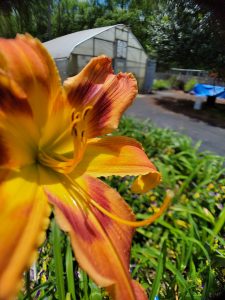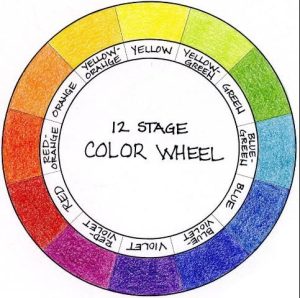Overview of Daylilies
Spring has begun, and the flowers are making their debut en masse. The daylily is an exceptionally versatile plant that grows in various colors, shapes, and habitats (Hemerocallis spp.). This plant garners its name from a combination of Greek terms meaning “beauty for a day,” given the tapestry a mass planting provides, they live up to that name. These plants tend to bloom repeatedly for 4-7 weeks, though each individual flower only lasts one day. The time of year flowering begins varies by cultivar, but typically, they may be seen beginning in March, with later bloomers starting around mid-May. Add to their beauty that they are also edible, and you have a plant that can’t be beaten.
These perennials are widely available as bare-root or potted plants. Both may be planted in Florida year-round, but planning in spring or autumn will increase success. Inspect roots before you plant them, removing any that are circling or damaged. Plant with the crown at ground level, much like a tree, and keep the soil moist until the plant is established. Though drought tolerant with deep roots, you’ll still want to apply mulch to retain moisture. Fertilizers may be added in spring, summer, and fall based on soil testing. Scouting this planting is important, but insects rarely cause lasting damage. They may be propagated vegetatively or via seed. Vegetative propagation will become important as these plants fill in spaces over the years and will need to be thinned.
Uses in the Landscape
Thanks to the hybridization efforts of growers worldwide, daylilies are available in every spectrum of color and a variety of flower shapes. Daylilies are clumping plants with grasslike foliage and flowers on a scape that may reach up to 36 inches tall. They can be striking when planted in groups of 10, included in a mixed border, or used to highlight a specific area of your gardens. Because they are so varied, it is important to carefully consider the design elements of your landscape and the growing conditions of your landscape when selecting varieties. All cultivars will require some sun, so avoid heavily shaded areas.
A Note on Color
Your biggest concern when considering daylilies in the garden will be color. When it comes to landscape design, color integration has three main theories. The first revolves around monochromatic flowering. Simply put, except for the green foliage, all flowers in this type of garden will be one color. Certainly, daylilies fall into this category, which are often yellow and may be quite striking. The second theory on color in your garden spaces is an analogous scheme in which 3-5 colors on the color wheel are utilized to create continual flow. In this case, find daylilies with red flowers and pair them with violet or yellow flowers. The final theory on color use in gardens is a complementary scheme. In this instance, colors on opposite sides of the color wheel are utilized. The contrast created by this method can create a striking difference that draws the eye to a specific point. Keep in mind that these are all theories. Ultimately, it is your landscape, and you should use those flower colors which satisfy your sensibilities.
Daylilies are a wonderful plant for your landscape. Easy to grow with great variety, few others can compete with them. For more information, see this Ask IFAS document. As always, please contact your local extension agent for additional information on this and any topic regarding your gardens and more.
- Cold Protection for North Florida - November 6, 2025
- Planning and Planting for Wildlife - October 10, 2025
- Why Say No to Invasive Species - August 23, 2025



